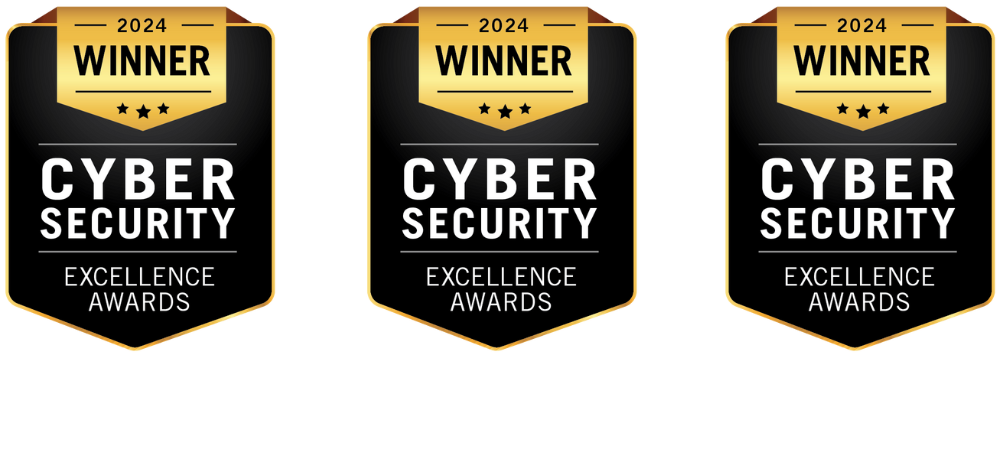Enterprises have poured time and resources into vulnerability management programs. Scanners sweep across networks and clouds, producing endless lists of issues to patch. On paper, this feels like control. In practice, teams are overwhelmed and attackers keep finding ways in.
Vulnerability management treats every issue as critical. Thousands of CVEs flood ticketing systems without context. Security teams scramble to patch low-risk flaws while critical exposures like misconfigured cloud buckets or unmonitored APIs remain unnoticed.
The numbers tell the story. In the first half of 2024, less than 1% of all reported CVEs were exploited in the wild. Yet teams spend countless hours triaging findings that may never pose a real threat. A report shows 85% of vulnerabilities remained unpatched after 30 days and nearly half were still open at 60 days.
If traditional vulnerability management cannot keep pace with modern attack surfaces, is it time to rethink the approach? The answer lies in understanding exposure management vs vulnerability management and why this shift is no longer optional.
What Is Vulnerability Management Really Doing?
Vulnerability management is the comfort zone for most security teams. Run scans, get a list of CVEs, assign tickets, patch, and repeat. It looks structured and reliable.
But the reality is different.
This process was designed for a simpler era. Back then, environments were static. Assets rarely changed. A CVSS score alone was enough to decide what got patched first.
Modern enterprises are far more complex. You now have:
- Cloud workloads that scale up and down every day
- APIs multiplying across teams and regions
- Third-party integrations bringing their own risks
- Shadow IT assets no one remembers until after a breach
Here is where the gap between exposure management vs vulnerability management becomes obvious.
Traditional vulnerability management focuses on:
- Known CVEs but misses misconfigured cloud storage or weak credentials
- Severity scores but ignores business impact or real-world exploitability
- Periodic cycles while attackers scan continuously, finding gaps faster than your next assessment
This leads to a dangerous pattern. High-severity flaws on internal servers get patched. Low-severity issues on public-facing assets are ignored. Attackers exploit these blind spots by chaining small vulnerabilities into large breaches.
Even worse, vulnerability management does not account for risks beyond CVEs. Open S3 buckets, forgotten subdomains, and overly permissive IAM roles often go unnoticed. These are the entry points attackers love.
The real question is not whether vulnerability management works. It is whether it is enough to protect dynamic environments.
How Exposure Management Changes the Equation?
Where vulnerability management stops, exposure management picks up. It shifts the focus from fixing everything to identifying what attackers can and will exploit.
This approach broadens visibility far beyond CVEs. It looks for misconfigurations, unsecured APIs, exposed cloud assets, weak credentials, and shadow IT—all areas where traditional scanners fail.
Here is how it delivers stronger protection:
- Holistic visibility
Maps your entire attack surface including on-prem, cloud, SaaS, and third-party assets. - Context-driven prioritization
Ranks risks by exploitability, asset criticality, and business impact. - Continuous validation
Keeps pace with attackers by constantly monitoring and testing for new exposures.
With exposure management, security teams focus on reducing actual breach risk instead of drowning in long vulnerability lists.
This is why exposure management vs vulnerability management is not just a comparison. It is a strategic decision for organizations that want to stay ahead of threats.
The difference between the two approaches is more than technical. It is about clarity, control, and focusing resources where they matter most.

This comparison shows why exposure management is the next step forward. It does not replace vulnerability management. It enhances it with the context and clarity needed to secure dynamic environments.
Your scanners don’t see the whole picture. Let us show you what they’re missing.
Why Vulnerability Management Is No Longer Enough?
1. Limited Visibility of Modern Attack Surfaces
- Scanners focus on known assets but often miss cloud workloads, APIs, and SaaS apps.
- Shadow IT and forgotten subdomains remain unmonitored and unprotected.
- Third-party integrations bring risks that rarely make it into vulnerability reports.
2. Prioritization Without Context
- CVSS scores do not account for business-critical assets or real-world exploitability.
- Teams waste effort patching internal flaws while public-facing risks stay open.
- Attackers chain low-severity issues into full-scale breaches that go undetected.
3. Periodic Assessments Leave Exposure Windows
- Quarterly or annual scans create long gaps where new vulnerabilities stay exposed.
- Changes in environments between scans often introduce fresh weaknesses.
- Attackers exploit these windows quickly, sometimes within hours of a vulnerability emerging.
4. No Continuous Validation of Fixes
- Fixes are marked “resolved” without confirming they were applied correctly.
- Configuration drift or updates can reopen previously closed vulnerabilities.
- Without retesting, teams get a false sense of security while exposures persist.
This is why even organizations with mature vulnerability management still experience breaches. The solution lies in adopting exposure management, which addresses these weaknesses head-on.
The Continuous Threat Exposure Management Framework

Exposure management is not just about better scanning. It is a structured approach that continuously uncovers, prioritizes, validates, and remediates exposures across your environment. Gartner calls this continuous threat exposure management (CTEM), and it has quickly become the blueprint for modern security programs.
The CTEM framework focuses on five key phases that keep your defenses aligned with the pace of change in today’s attack landscape.
1. Scoping
- Define which assets, environments, and business processes are in focus.
- Include on-premises, cloud, SaaS, APIs, and third-party connections for full coverage.
- Align scoping with business priorities to protect what matters most.
2. Discovery
- Identify all known and unknown assets, including shadow IT and legacy systems.
- Uncover misconfigurations, exposed services, and weak credentials beyond CVEs.
- Use continuous asset discovery to maintain an up-to-date view of your attack surface.
3. Prioritization
- Rank exposures by exploitability, business impact, and threat intelligence.
- Move beyond CVSS scores to focus on risks attackers are actively targeting.
- Allocate resources effectively by addressing high-risk issues first.
4. Validation
- Simulate real-world attacks to confirm which exposures are exploitable.
- Validate the effectiveness of applied fixes through automated and manual testing.
- Identify and close security gaps before attackers can exploit them.
5. Remediation
- Automate workflows to reduce time from detection to resolution.
- Integrate with existing ticketing systems for seamless operations.
- Track remediation progress with real-time dashboards and SLA monitoring.
The result is a proactive, continuous process that reduces exposure windows and prioritizes the risks that truly matter. It is not a replacement for vulnerability management, it is the evolution.
See how exposure management transforms security operations in weeks, not months.”
👉 Talk to our team and get a tailored walkthrough.
How Ready Is Your Organization for Exposure Management?
Before adopting exposure management, ask these five questions to assess your organization’s preparedness.
1. Do we have full visibility into our attack surface?
- Are all assets mapped, including shadow IT, cloud workloads, APIs, and third-party connections?
- Or are we still relying on static asset inventories?
2. Is our prioritization based on real-world risk?
- Do we combine exploitability data, threat intelligence, and business impact?
- Or are we still patching by CVSS scores alone?
3. Can we validate fixes continuously?
- Are there processes to test and verify remediation efforts in real time?
- Or are fixes assumed to work once marked “resolved”?
4. Are our workflows automated and aligned across teams?
- Is remediation integrated with ticketing systems and CI/CD pipelines?
- Or are we still relying on manual processes and spreadsheets?
5. Do we track the right metrics to measure progress?
- Are we monitoring MTTR, SLA adherence, and attack surface risk scores?
- Or, is success measured only by the number of patched vulnerabilities?
If you answered “no” to any of these, your organization is still operating in vulnerability management mode. Exposure management isn’t just an upgrade. It is a shift to proactive, business-aligned security.
The ROI of Exposure Management
Exposure management is more than a tech upgrade. It drives measurable business value by reducing risk, optimizing operations, and strengthening compliance.
1. Avoid Costly Data Breaches
- Breaches involving cloud environments average about $5.17 million, making them the most expensive to resolve.
- By focusing on high-risk exposures, exposure management lowers the odds of these multimillion-dollar incidents.
2. Minimize Downtime Costs
- Hourly IT downtime now averages between $9,000 to $17,000 per minute, equating to up to $1 million per hour.
- Exposure management helps detect and patch high-impact vulnerabilities faster, reducing these costly outages.
3. Reduce Security Operations Overhead
- By prioritizing risks based on exploitability and business context, organizations cut false positives and manual triage time by up to 50%.
- This not only saves time but also reduces operational strain on security teams.
4. Strengthen Compliance and Audit Readiness
- Continuous vulnerability discovery, remediation, and validation align with PCI DSS, SOC 2, NIST CSF, and NIS2 requirements.
- Automated reporting simplifies audits and reduces compliance-related costs.
A Simple ROI Formula
ROI = (Estimated Breach Cost Avoided – EM Investment) ÷ EM Investment × 100
Example:
- Estimated breach cost: $4.8 million
- EM program investment: $200,000
- ROI = ((4,800,000 – 200,000) ÷ 200,000) × 100 = 2,300%
This doesn’t even account for intangible gains like stronger board confidence and improved customer trust.
Key Takeaways
- Vulnerability management can’t keep up. It misses hidden risks and overloads teams with endless patches.
- Exposure management is different. It delivers full visibility, smarter prioritization, and continuous validation.
- Modern threats demand a smarter approach. One that focuses on real risk, not just scan results.
- The payoff is clear. Faster fixes, fewer blind spots, and stronger protection against costly breaches.
See Your Attack Surface as It Really Is
Your attack surface grows every day. Attackers already know where to strike. Do you? Book a meeting with our experts to understand how exposure management helps reduce your biggest security risks.
Related Reads:
- Top 5 Vulnerability Management Mistakes Companies Make
- Vulnerability Management Lifecycle: The Ultimate Guide to Business Security
- Top 15 Vulnerability Management Tools for Businesses in 2025
- Solving the Biggest Vulnerability Management Challenges with Strobes
- How to Prove the ROI of Your Vulnerability Management Metrics to the Board?
- The Evolving Landscape of Security: From Vulnerability Management to CTEM
- Solution: Risk Based Vulnerability Management








